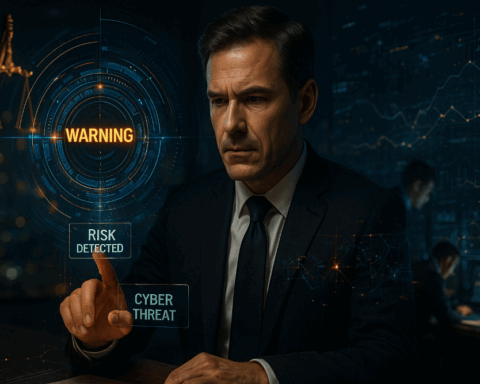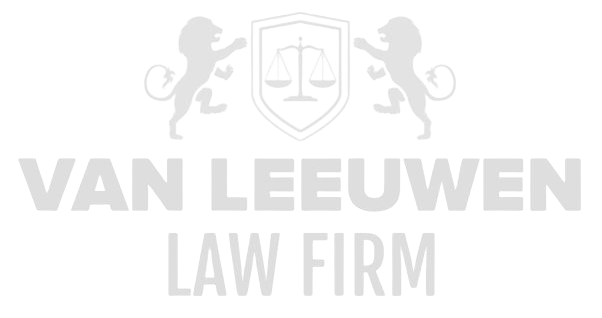In today’s industrial and commercial environment, management boards are confronted with an increasingly complex regulatory landscape that encompasses both environmental protection and the safety and health of employees. Environmental, labour, and safety regulations are not an abstract legal framework; they are an integral part of strategic decision-making within organisations. The C-suite should not only be aware of formal obligations but must also deeply understand the implications of these regulations and translate them into operational strategies that make the organisation resilient against legal and societal risks. Non-compliance can have far-reaching consequences, ranging from heavy fines and criminal liability to severe reputational damage that may threaten the continuity of the business.
The spectrum of regulations is broad, covering both mandatory safety measures and environmental requirements on the one hand, and normative expectations in the areas of sustainability and corporate social responsibility on the other. Integrating environmental, labour, and safety regulations into the core processes of an organisation requires a systematic and proactive approach. This is not only about implementing protocols but also about cultivating an organisational culture where awareness of risks and a sense of responsibility are present at all levels.
Management must conduct a structured evaluation of potential hazards and their impact, a process that requires in-depth knowledge of technical, legal, and social aspects. In sectors subject to the Major Accidents Risks Decree (BRZO)—such as the chemical industry and energy supply—this challenge is amplified by the presence of hazardous substances and complex processes that can have catastrophic consequences in the event of an incident. Executives must therefore adopt a holistic strategy in which compliance, risk avoidance, and transparency towards regulators go hand in hand with operational efficiency and strategic business objectives.
Environmental Protection Legislation
Environmental protection laws form the foundation of every sustainable business operation. The aim of such legislation is to preserve ecological systems, protect biodiversity, and limit the harmful effects of industrial activities on air, water, and soil. For organisations, this means that every stage of production or service delivery must be critically assessed to identify and control potential environmental impacts.
The complexity is compounded by the fact that environmental regulations can be both national and international in nature, requiring companies to adapt to a variety of demands that often conflict with one another. Ignoring such regulations can lead to legal proceedings, sanctions, and loss of public trust. Beyond the legal obligation, effective environmental protection requires strategic integration into all business processes. This implies that environmental criteria must be included in investment decisions, supplier selection, logistics, and production planning.
The objective is not only to minimise negative impacts but also to seize opportunities for innovation and competitive advantage. Organisations that proactively respond to environmental legislation can implement technological improvements, increase energy efficiency, and reduce waste streams—achieving both cost savings and enhanced reputation.
A crucial element is the continuous monitoring and reporting of environmental performance. Companies should collect detailed data on emissions, energy consumption, water usage, and waste production. These data form the basis for internal evaluations and external accountability towards regulators, shareholders, and societal stakeholders. Benchmarking and audits can also be used to measure performance against industry standards, enabling timely adjustments and minimising compliance risks. Only through a structured, data-driven approach can environmental compliance be transformed into a sustainable competitive advantage.
Permits and Compliance with Environmental Law
Permits are the instrument through which governments enforce and regulate compliance with environmental legislation. Any organisation engaging in activities that pose a potential environmental risk must hold the appropriate permits, ranging from emission limits to water discharges and waste management. Obtaining these permits is a complex process that requires extensive documentation, environmental studies, and risk assessments. Non-compliance can result in penalty payments, facility closures, or criminal liability.
Beyond obtaining permits, continuous adherence to their conditions is essential. This requires internal procedures and controls to ensure that emissions, waste streams, and other environmental aspects remain within established limits. Regular internal audits, inspections, and reporting are crucial to detect deviations at an early stage and implement corrective measures. Effective compliance also demands a clear allocation of responsibilities within the organisation and the cultivation of a culture in which employees are aware of legal requirements and their role in upholding them.
The strategic dimension of permit management should not be underestimated. Organisations must anticipate changes in legislation and apply for permit amendments or operational adjustments in a timely manner. This requires not only legal expertise but also a deep understanding of production processes, technology, and environmental effects. Proactively managing permits can reduce legal risks while safeguarding operational continuity—a critical factor in sectors where environmental regulation is strictly enforced.
Waste Management and Recycling Obligations
Waste management is an integral component of an organisation’s environmental strategy. Legislation mandates that waste streams be processed, documented, and—where possible—reused in an environmentally friendly manner. Organisations must have a clear understanding of the nature and composition of their waste streams, including hazardous waste, and take appropriate measures to minimise negative environmental impacts. Failure to handle waste correctly can result in sanctions, liability, and reputational harm.
Recycling obligations form an important dimension of waste management. These requirements are often sector- or product-specific and compel organisations to recover, reuse, or responsibly process materials. Implementing effective recycling processes requires detailed logistical planning, cooperation with specialised processors, and ongoing monitoring of reuse efficiency. By strategically applying recycling measures, an organisation can not only comply with legislation but also embrace circular economy principles and achieve cost savings.
Awareness and staff training play a crucial role. Employees must understand the procedures for separating, storing, and disposing of waste, and why compliance is essential for both legal and reputational reasons. The success of a waste and recycling strategy depends on integrating this knowledge into daily operations and continually evaluating the effectiveness of the measures taken. Only through a systematic, data-driven, and culture-driven approach can waste management evolve from a legal obligation into a strategic asset.
Emissions and Emission Control
Controlling emissions and other forms of discharge is a core component of environmental protection and compliance. Organisations must understand the nature, volume, and sources of their emissions, including air pollutants, greenhouse gases, and other chemical compounds. Monitoring these emissions requires advanced measuring equipment, data collection, and analysis, so that deviations from legal limits can be detected and corrected in time. Failure to control emissions can lead to severe sanctions and erosion of public trust in the organisation.
Effective emission control requires both technical and organisational measures. Technical measures include air and water purification systems, process optimisation, and energy savings. Organisational measures involve establishing procedures, training staff, and implementing control systems that detect and mitigate deviations. An integrated approach, in which technical solutions go hand in hand with behavioural change and compliance, is essential for ensuring sustainable emission control.
The strategic value of emission control goes beyond regulatory compliance. Companies that actively invest in reducing their environmental impact can improve operational efficiency, cut costs, and strengthen their competitive position. Moreover, transparent reporting of emissions to stakeholders and regulators is essential for reputation management and can serve as evidence of corporate social responsibility. In sectors where emissions are a critical factor, a systematic approach to emission control can make the difference between operational continuity and legal or financial risks.
Working Conditions and Occupational Health & Safety Legislation
Working conditions are an essential part of management’s obligations towards staff. The Working Conditions Act (ARBO) stipulates that employers must provide a safe and healthy work environment in which risks are systematically identified, assessed, and controlled. This includes physical, chemical, biological, and psychosocial risk factors, ranging from machine safety and exposure to hazardous substances to workload and stress. Non-compliance with ARBO obligations can lead to legal proceedings, fines, and an increased risk of workplace accidents.
Implementing effective working conditions policies requires systematic and ongoing evaluation of work processes, with employees actively involved in risk identification and prevention. Preparing risk inventories and evaluations (RI&E), establishing safety procedures, and providing targeted training are crucial steps in creating a safe workplace culture. Only through a culture of engagement, awareness, and responsibility can compliance with occupational health and safety legislation be sustainably secured.
Beyond legal compliance, good working conditions offer strategic benefits. A safe work environment leads to higher productivity, lower absenteeism, and a positive reputation among both employees and external stakeholders. Companies that place occupational safety and health at the heart of their strategy invest not only in compliance but also in the long-term success of their organisation. Linking ARBO measures to broader strategic objectives strengthens the organisation operationally, legally, and socially.
Risk Inventory and Evaluation (RI&E)
Conducting a thorough risk inventory and evaluation is at the core of effective safety and environmental management within any organization. An RI&E provides a systematic overview of all potential hazards and risks that may affect employees, the environment, and business processes. The process requires in-depth knowledge of both the technical and organizational aspects of the workplace, examining every component of operations. This includes not only visible hazards, such as machinery or chemicals, but also less tangible risks such as psychosocial stress, workload, and organizational inefficiencies.
The methodology of an RI&E requires a structured approach in which risks are identified, analyzed, and prioritized based on the severity and likelihood of an incident. This analysis should be supported by current data, historical incident records, and industry-specific benchmarks. The process obliges organizations to simulate scenarios that could lead to major accidents, making not only acute risks visible but also the chain of causes that could result in disasters. Proper execution of an RI&E is both a legal and societal tool that lays the foundation for preventive measures and fosters a culture of proactive safety.
The outcome of an RI&E must be concretely translated into policy measures and operational actions. This includes both technical solutions, such as modifications to installations or shielding of hazardous processes, and organizational measures, such as establishing clear protocols and communication channels during incidents. Management should integrate these results into strategic decision-making, ensuring compliance with laws and regulations while striving for operational excellence. An RI&E is therefore not merely an administrative obligation but a strategic instrument that safeguards business continuity while protecting human and environmental safety.
Personal Protective Equipment (PPE)
The use of personal protective equipment is a fundamental pillar of any organization’s safety policy that aims to minimize occupational hazards. PPE forms the last line of defense between the employee and the dangers inherent in business activities, ranging from chemical exposure and heat to falling objects and noise. Selecting the appropriate PPE requires a careful analysis of the risks identified in the RI&E, taking into account factors such as the type of hazard, duration of exposure, and the physical demands on the wearer.
Implementing a PPE program goes beyond simply providing equipment; it includes instructions, training, and monitoring proper use. Employees must be fully informed about the purpose and function of each item, including limitations and maintenance requirements. Improper use or inadequate compliance can result in serious injuries and may also have legal consequences for the organization. Management must therefore foster a culture of responsibility and adherence in which the use of PPE is standard, with oversight and feedback systems structurally integrated.
In addition, evaluating and periodically updating PPE policies is an essential element of continuous improvement. New technologies, changing processes, and incident data may necessitate adjustments in the selection and application of equipment. Systematic investment in innovation and ergonomics can improve comfort and reduce the likelihood of non-compliance. PPE is not merely a legal requirement; it is a strategic tool to strengthen safety culture and protect long-term business performance.
Fire Safety and Explosion Protection
Fire and explosion safety represent a complex and critical focus area for organizations working with flammable materials or hazardous processes. Preventing fires and explosions requires an integrated approach encompassing both the physical design of the workplace and operational procedures. Installations, storage facilities, and transport flows must be designed to minimize risks. This involves both technical measures, such as fire-resistant partitions and ventilation systems, and organizational measures, such as clear work procedures and strict permit requirements.
Developing a comprehensive fire safety plan is essential and must consider all scenarios, from minor incidents to catastrophic fires. This plan should be integrated with overall corporate safety and regularly tested through simulations and drills. Prevention also includes selecting suitable materials, maintaining firefighting equipment and detection systems, and implementing alarm systems that enable timely and effective intervention. Explosion protection additionally requires deep knowledge of chemical properties, process safety, and interactions between different substances.
The legal and societal implications of fire and explosion safety are significant. Non-compliance with regulations can result in heavy fines, liability for casualties, and severe reputational damage. It is therefore crucial that management takes an active role in monitoring compliance, ensuring staff are properly trained, and promoting a culture of awareness and readiness. Fire and explosion safety are not optional components of operations but fundamental obligations that ensure organizational continuity and the safety of people and the environment.
Seveso Establishments and Major Accident Risk Management
Organizations subject to the Major Accidents (Risks) Decree (BRZO/Seveso) hold an extremely responsible position due to the potentially catastrophic consequences of incidents. BRZO regulations are specifically designed for companies handling large quantities of hazardous substances and complex processes, such as chemical plants, refineries, and power stations. The legal framework requires these organizations to implement robust risk management, including identifying, evaluating, and mitigating major accidents.
Establishing a BRZO-compliant safety management system requires an integrated approach that combines technical, organizational, and human factors. This includes process safety, maintenance, emergency procedures, staff training, and strict reporting and communication protocols with regulators. Intensive audits and inspections by authorities require a high level of transparency and discipline, where even minor deficiencies can result in significant corrective measures. The challenge is to balance compliance with operational efficiency without allowing safety measures to hinder business continuity.
Management of BRZO establishments must also anticipate unexpected scenarios and develop robust crisis plans. This means that technical measures, simulations, drills, and scenario analysis are all essential. A proactive approach is required, with continuous improvement, innovation, and knowledge sharing within the sector at its core. BRZO compliance goes beyond merely meeting legal requirements; it is a strategic necessity that ensures the safety of people, the environment, and business continuity.
Incident Reporting and Accident Investigation
Incidents and accidents are critical moments for organizations, where the manner of reporting and investigating directly affects legal liability and operational safety. A systematic reporting and investigation process ensures that each incident is fully documented, causes are accurately identified, and measures are implemented to prevent recurrence. This process requires an independent and thorough approach, with objectivity and transparency as priorities.
Accident investigation goes beyond identifying the immediate cause. It also focuses on underlying factors, such as organizational deficiencies, process errors, behavioral aspects, and potential shortcomings in the safety management system. The goal is to create a comprehensive understanding of how and why the incident occurred, enabling management to determine which corrective and preventive actions are necessary.
Additionally, the obligation to report to regulators and relevant authorities plays a crucial role. Timely, complete, and accurate reporting can not only reduce legal penalties but also contribute to sector-wide learning from incidents. A culture in which incidents are openly reported and investigated, without fear of punishment or blame, promotes continuous learning and strengthens overall safety culture. Incident reporting and investigation are therefore not merely administrative obligations but strategic tools that control risks and enhance organizational resilience.
Corporate Emergency Response (BHV) and Crisis Management
A robust corporate emergency response structure forms the first line of defense against acute threats to life, health, and business continuity. BHV is not a mere box-ticking exercise; it is a legally anchored and operationally critical toolkit that enables rapid, coordinated intervention in the event of fire, evacuation, medical emergencies, or technical failures. A well-designed BHV plan is based on a dynamic risk assessment per location and process, translated into staffing requirements, resource positioning, and redundant communication channels. Facilities with elevated risk profiles—such as hazardous substance storage, confined spaces, and high-risk processes—require fine-grained response capabilities, including scenario-specific escape routes, real-time availability of critical PPE, and interoperability with external emergency services. Failure at this first level disproportionately increases the likelihood of escalation, with potential criminal, civil, and administrative consequences.
Crisis management begins where BHV ends: when an incident crosses the threshold into organization-wide disruption. An effective crisis framework defines authority, escalation lines, and decision-making criteria with surgical precision. It focuses on four pillars: situational awareness through reliable information gathering; strategic decision-making under time pressure; legally sound and factually consistent public and stakeholder communication; and continuity planning to protect or orderly scale down vital processes. Exercises should not merely train reflexes but also challenge assumptions: war-gaming with opposition, black-swan scenarios, and unexpected injects expose organizational blind spots. Documentation of decisions—including underlying reasoning and sources—is essential for subsequent accountability, insurance claims, and potential forensic reconstruction.
Linking BHV and crisis management requires seamless transition mechanisms: triggers that formalize escalation, role congruence between operational leadership and the crisis team, and a shared lexicon to prevent miscommunication. Post-incident evaluations should not stop at identifying human errors but probe system weaknesses: workload, interface design, alarm fatigue, and organizational incentives that inadvertently undermine safety. Structural improvements—from technology to behavior—must be embedded in policy, budget, and performance indicators. Only when BHV and crisis management function as a single integrated safety organ does the resilience demanded by regulators, supervisors, and society truly emerge.
Audits, Inspections, and Compliance Monitoring
Audits and inspections form the evidentiary backbone of a mature compliance architecture. Internal audits do not merely check for the presence of procedures; they assess effectiveness, currency, and compliance in the full context of risks, legislation, and permit requirements. A risk-based audit program prioritizes processes with the highest potential impact on people, the environment, and business continuity. Sampling, line observations, and data triangulation—incident logs, process parameters, maintenance history—provide a factual foundation for findings. Ensuring independence, methodological consistency, and traceability of audit trails is indispensable, especially in anticipation of external review or legal proceedings.
External inspections by regulators measure the organization against standards of conformity and duty of care. Transparency, disciplined documentation, and proof of being ‘in control’ are decisive. This requires a permanent internal inspection regime rather than ad hoc cleaning before announced visits. Permits, measurement reports, calibration certificates, risk assessments (RI&E), and management reviews must demonstrably align with actual practice on the shop floor. Deviations demand SMART corrective and preventive actions, with root-cause analyses that go deeper than symptom treatment. Failure to do so increases administrative risk: from enforcement orders and penalties to full shutdown of installations.
The strategic value of audit results lies in translating them into actionable insights. Trend analyses of deviations, near-misses, and enforcement outcomes make prioritization objective and defensible. Management reports should contain non-manipulable indicators: leading metrics (training compliance, timely maintenance, MOC throughput) alongside lagging metrics (incidents, emission exceedances). The cycle concludes with formal management review, during which policy, resources, and responsibilities are recalibrated. Only organizations that elevate audits to a management tool—rather than degrade them to ritual—reduce legal vulnerability and strengthen evidence of proper corporate governance.
Training and Education of Personnel in Safety and Environmental Practices
Knowledge and skill are the real safety barriers; technology without competence is illusory. An effective training system starts with a matrix linking role, risk exposure, and legal requirements to learning objectives, certifications, and requalification periods. Access to high-risk tasks—lockout/tagout, working at heights, confined spaces, hazardous substances—should only occur after demonstrable competency, verified through theory, practical exercises, and behavioral observation. Onboarding programs for contractors require the same rigor; liability makes no distinction based on badge color. Digital learning systems offer scale but cannot replace realistic scenario-based exercises; the body learns what the mind thinks it knows.
Training is not a one-off ritual but a continuous process evolving with changing installations, procedures, and regulations. Management of Change (MOC) must mandate the addressing of training implications: how do task risks change, which instructions become obsolete, and which emergency procedures require refresher exercises? Incidents and near-misses provide case material for microlearning; every deviation is a study opportunity. Evaluating training effectiveness requires more than attendance lists: field performance, adherence to critical steps, and error-resistant actions under pressure are the true benchmarks. Where performance lags, redesigning tasks or tools is often more effective than adding extra slides.
A strong learning culture recognizes that human error is predictable and designs systems to catch mistakes before harm occurs. Simulations, tabletop exercises, and cross-functional drills enhance team coordination and situational awareness. Leadership has a pedagogical role: modeling behavior, enforcing consequences consistently, and acknowledging reports without reprisal. Investing in training is not a cost but risk reduction with measurable returns: fewer incidents, higher availability of installations, stronger compliance records for supervision and insurance, and a reputation resilient to shocks.








